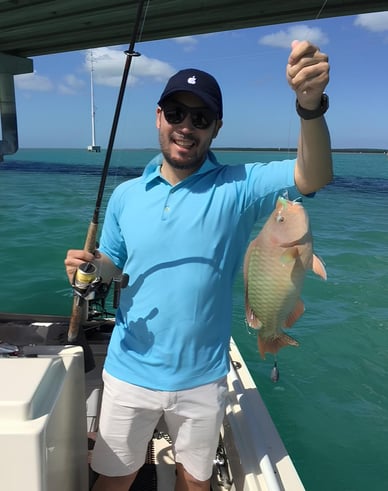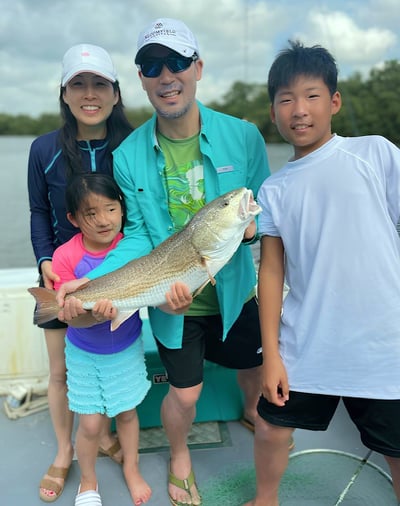By most measures, Pat Kim hit 40 in success-filled stride: an inventory of his life at that time...
An Immigrant’s Tale: Meet Co-Founder Steve Ham
There’s a part of his personal and professional journey that prompts Steve Ham to chuckle while discussing Altmore Capital’s leading role in cannabis capital.
“I grew up in a very conservative household, so cannabis wasn’t a thing for me,” he said. “I didn’t even start drinking until I was 21.”
And yet, his upbringing, which included immigrating to the U.S. from South Korea as a kid, has helped our co-founder set a strong foundation for unblinkingly confronting any obstacle that arises.
Especially within the fast-growing and at-times volatile cannabis industry.
“My formative years really made me who I am—coming to the States at 13, not knowing a word of English, and going through many challenges,” he said. “Today, not that many things phase me because I feel like I already went through some crazy stuff when I was young.
“And I think that perhaps set me up for success as I expect some hard things to come up and you just have to figure out a way to overcome them. Whether it’s through your own internal fortitude or with a good partner—and hopefully it’s some of both.”
Recently, Steve shared deeper insights into his career path.
An Unexpected Introduction to Cannabis...

Things certainly happen in mysterious ways. In 2017, while I was running a nanotech startup, I attended a dinner party and sat next to a young guy who was very cagey about what he did for a living. Since everyone else was very open about what they did, it was odd that he wasn’t sharing, but after a couple of drinks, he admitted that he invested in cannabis real estate.
It was 2017, and legal cannabis was a pretty new concept, so I asked him to tell me more and he said he had a 30 cap real estate deal. I asked if he meant three cap, but he said no, it was a 30 cap deal, which I didn’t believe could exist. He invited me to visit him the following week to see for myself, so I literally booked a ticket the next day and I went out to see this 30 cap investment. It was at that point that the risk-adjusted return part of my brain turned on and I proceeded to get into something that I never, ever anticipated.
...Which Was Fortuitously Timed
At the time of that discussion, which eventually led to Altmore, I was in the midst of a frustrating stretch with the nanotech startup. We developed a type of carbon nanotube for the aircraft industry and we raised about $45 million from investors. I hadn’t, however, appreciated how big of a problem it would be to get the products qualified for use in airplanes or any other flying vehicles.
It was going to be years. And by that, I mean a decade or so. The qualification phase is so long that the vast majority of these material science projects are part of a larger corporation—almost never by early stage firms backed by venture capital partners, who don’t tend to want to do longer-horizon deals.
The money we raised wasn’t enough to fund the company’s operations for 10 years, so when I saw the opportunity in cannabis, we sold the nanotech intellectual property, which allowed us to return the vast majority of funds to our investors.
Deep PE Experience

The nanotech experience followed close to two decades in private equity, first at Carlyle and then with a startup hedge fund. My Carlyle experience was unique in that I was a generalist—one of the few at the firm. That allowed me to look at any industry, as long as the potential risk-adjusted return was high. So, we invested in a wide variety of different opportunities. For example, Carlyle had never considered financial services firms, but I closed the first bank deal the firm ever did. So, I was used to looking at where could we generate the most alpha, regardless of what we knew about the industry going into the deal.
I was also part of a small team that Carlyle tasked with opening a new Asia office in Seoul. It was the late 1990s, when Asia was just getting up and running with regard to private equity. Prior to that, virtually every available asset was really bought only by strategic investors, not financial investors such as Carlyle. Having seen that emerge and witnessing the power of that type of new investment strategy was really, really interesting.
Actually, I’d started going back to Korea when I was in my first job with Salomon Brothers, as the Asian Financial Crisis in 1997 resulted in a lot of assignments for investment bankers. Many large corporations there like Samsung, LG, and others were selling off assets because they were too highly leveraged. But going back there to live a couple of years later as part of this Carlyle assignment was much different. It was such an experience to see how new markets were opening up to different investment strategies.
It’s somewhat akin to what we’re doing here. The cannabis industry didn’t exist so we’re at the forefront of something that feels like it could be big.
Rounding Out His PE Expertise
From Carlyle, I was recruited to run a new hedge fund, which exposed me to investing with a growth equity mindset. That differed from Carlyle’s leveraged-buyout approach, so it was really exciting as it exposed me to a lot of deals, including some large ones, that I generally completed on my own. I started thinking “wow, maybe I could try to do this on my own,” which led to the nanotech company.
Well-Versed in Entrepreneurship
My parents were very entrepreneurial so when we arrived in the U.S. in 1987, we bootstrapped everything in starting a few businesses to create value for the family. As is typical in any family-owned business, everybody had to pitch in to make it successful. We had multiple businesses, but the flower shops they opened really taught me the value of hard work more than anything else.
The crazy thing about running a flower shop is that the vast majority of your revenues are dependent on five or six different holidays and the wedding season during the summer months. Essentially, less than 10 events that are really kind of jam packed, which means sleepless nights at those times because it’s difficult to hire help to meet those short time-frame needs. Which means you’ve got to put in the long hours yourself.
Architect Dreams Gave Way to Numbers

Technically, I was studying management information systems (MIS), but I found studying accounting and finance much more interesting. My degree ended up being in MIS, but I could have had a double major in finance if I had taken one more class, but I already had a job at an investment bank lined up, so I didn’t take the extra class.
Early Exposure to Both Sides of M&A
I worked a summer internship after my junior year at Price Waterhouse doing strategic consulting work, but during my senior year I landed interviews with Salomon Brothers and Bear Stearns. Salomon Brothers offered me a job in their mergers and acquisitions group, working with clients on merger analysis—looking at potential acquisition targets—as well as a lot of sell-side work with clients considering selling subsidiaries. In that role I got to see both sides of transactions, and that’s a great background for private equity. After two years there, I jumped to a merchant bank, where I worked on some deals from the buy side, both for clients and for an investment fund the bank was running itself. Those early jobs provided a great segue into the private equity opportunity at Carlyle.
Today, a Broader Appreciation
Currently at Altmore, I am immensely proud of the team and culture we’ve built here. When I first started the firm, I didn’t think I would spend as much time thinking about that as I have. But it’s been enormously fulfilling to be as proud of our team as I am of our participation in the growth of the industry.
When Pat Kim and I started Altmore, we decided that the day we’re not having fun doing this, we’re going to get out. It didn’t happen over the last seven years and hopefully it doesn’t happen any time soon, but we see it as a once-in-a-generation opportunity to grow an industry that was in its nascency to $100 billion over the next 15-20 years. In itself, that is super unique, but as the cherry on top, it’s a really, really fun industry to work in.



